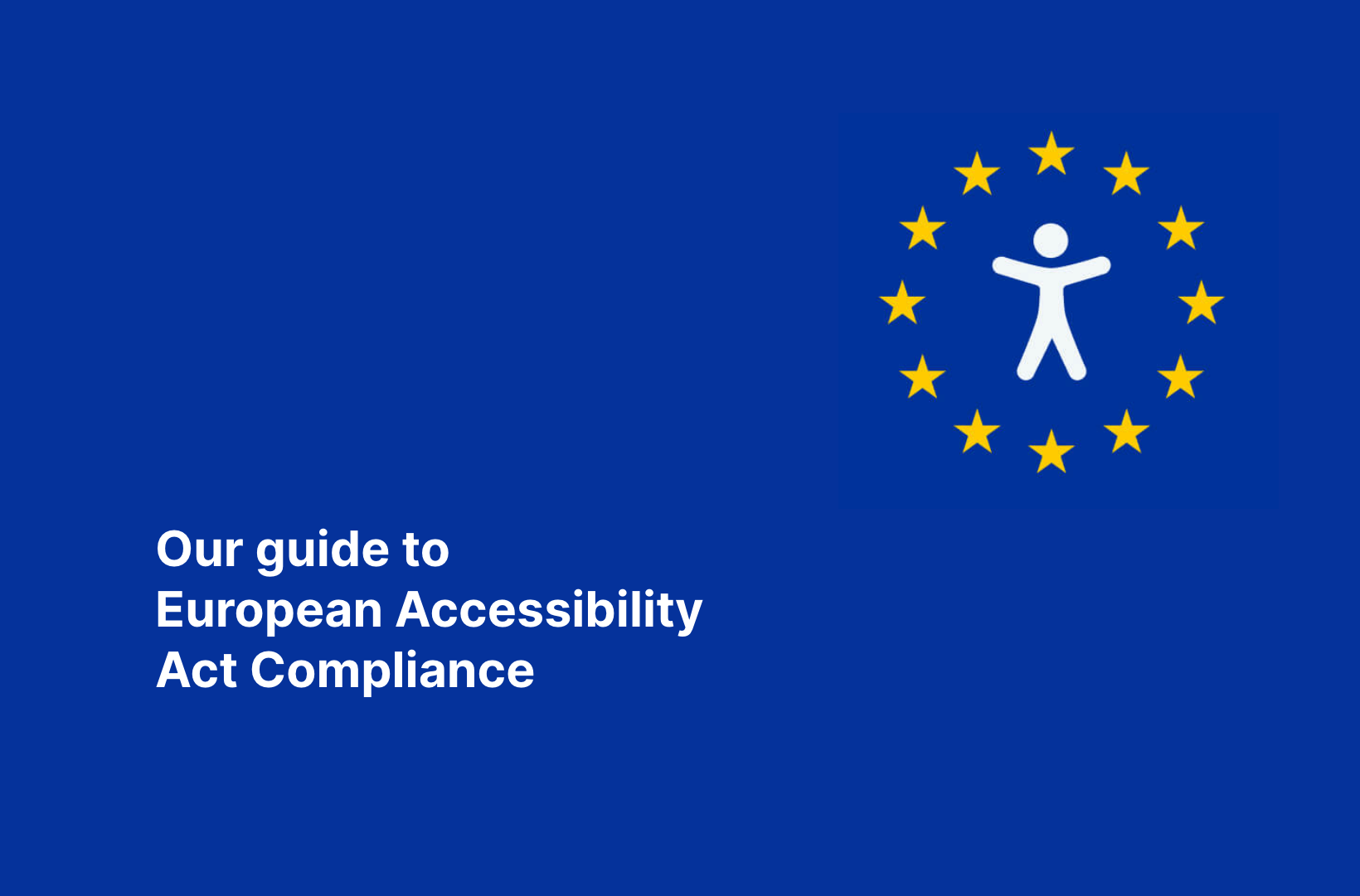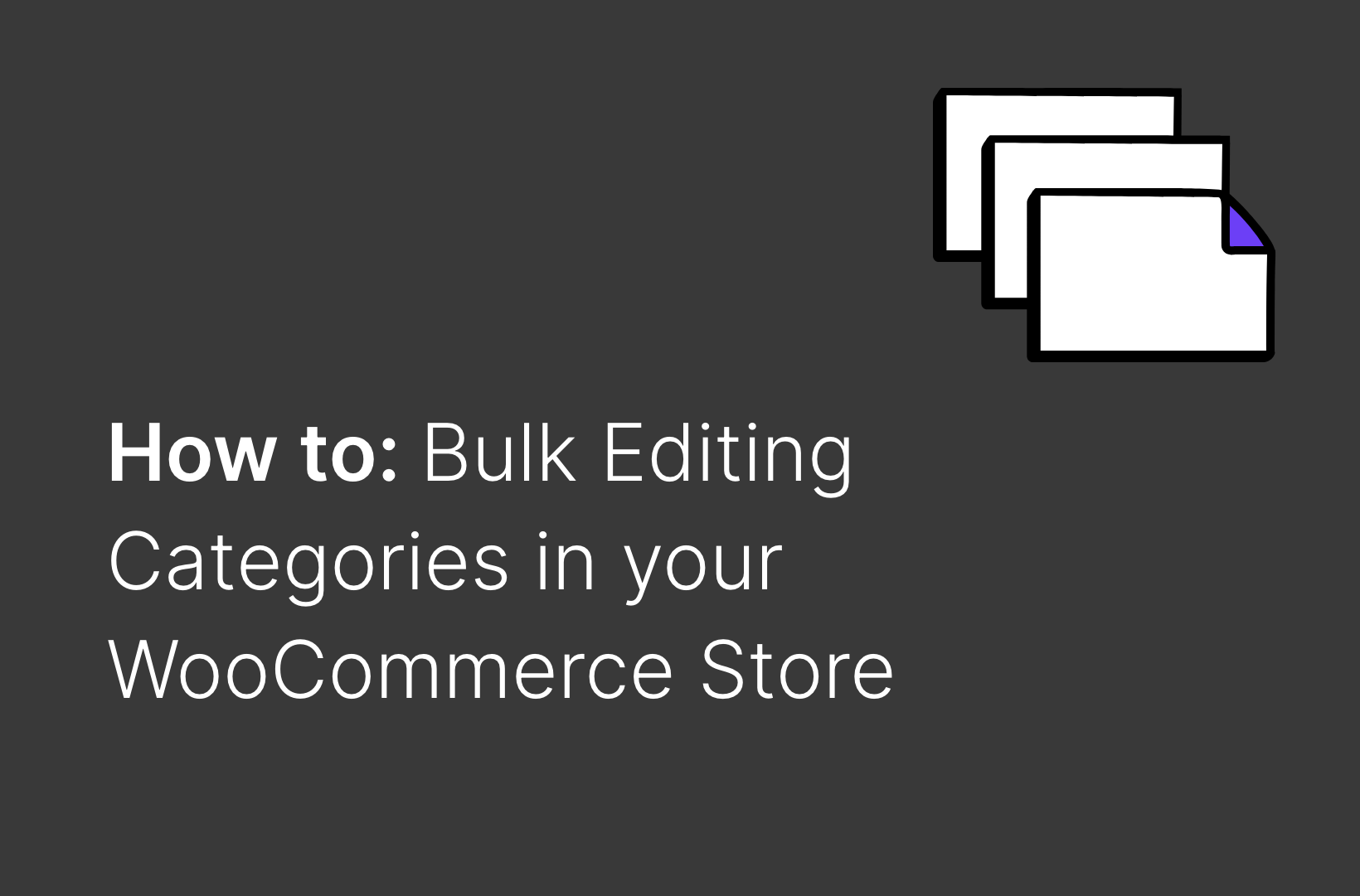Ensuring Your Business Meets EAA Standards

Is your eCommerce store prepared for the European Accessibility Act (EAA)? This directive requires many private entities, including some eCommerce businesses based in the United States, to comply with strict accessibility standards. As a result, it will significantly impact how you operate your online store in the EU.
Web accessibility ensures that people with disabilities can perceive, understand, navigate, and interact with websites and digital tools. By making your eCommerce store accessible, you not only comply with the accessibility standards outlined in the EU Web Accessibility Directive but also demonstrate your commitment to inclusivity and social responsibility.
Failure to comply with the EAA by the June 28, 2025, deadline could result in legal ramifications, financial penalties, and reputational damage, and remediation may take six or more months to complete. This is why it’s crucial to start preparing your eCommerce store for the upcoming changes as early as possible.
In this article, we’ll take a closer look at the European Accessibility Act and its implications for your eCommerce business. We’ll also explain how Saucal, a leading enterprise WooCommerce development agency can help you ensure your website complies with the new directive. Let’s begin!
How the European Accessibility Act can affect your business
The European Accessibility Act (EAA) is a comprehensive legislation that aims to make products and services more accessible for people with disabilities within the European Union (EU). While the earlier EU Web Accessibility Directive focused on ensuring public-sector bodies met accessibility standards, the EAA has a broader scope that affects private entities as well.
If your business provides products or services sold or used within the EU, then regardless of where your company is based, you must comply with the EAA. This includes commercial enterprises operating in and with the EU, as well as those in the UK and other regions that serve and sell to EU citizens.
To meet the requirements of the EAA, your business will need to ensure that your products and services are accessible to people with various disabilities, such as visual, auditory, cognitive, and motor impairments. This may involve making changes to your website, mobile apps, and other digital platforms, as well as physical products and services.
Products and services covered by the EAA
The European Accessibility Act (EAA) applies to various digital entities, including:
- Websites.
- eCommerce apps.
- eBooks.
- Other digital products like cash machines.
It’s important to note that there are a limited number of exceptions, such as broadcasters and live streaming. However, the majority of digital products and services fall under the EAA’s scope.
Prioritizing accessibility and adhering to the EAA’s guidelines can help companies avoid legal issues and demonstrate their commitment to inclusivity and social responsibility. This, in turn, can lead to increased customer loyalty and a positive brand image.
Penalties for non-compliance with the EAA
Failing to comply with the European Accessibility Act (EAA) can seriously affect companies operating within the European Union. Each EU member state is responsible for enforcing the EAA within its own jurisdiction, and penalties for non-compliance can vary from country to country.
Common penalties for violating the EAA include:
- Substantial fines, which can reach up to €100,000 in countries like Germany.
- Legal actions, such as lawsuits or even prison sentences in some cases.
- Negative publicity and public embarrassment for the companies involved.
- Blocking the display of a website.
Understanding the implications for microenterprises
Currently, the European Accessibility Act does not apply to microenterprises, defined as businesses with fewer than 10 employees and an annual turnover or gross revenue not exceeding 2 million euros. However, it’s crucial for these smaller businesses to stay ahead of the curve and ensure their websites are compliant.
Over the next 5 to 10 years, it’s highly likely that the thresholds for exemptions will be lowered, meaning more businesses will be required to comply with the accessibility regulations. If you operate a business in the EU, it’s wise to plan for compliance now, even if you currently qualify for the microenterprise exemption.
– Bet Hannon, CEO at AccessiCart
Moreover, making your website accessible is simply good business practice. By ensuring your site is usable by people with disabilities, you can expand your customer base and enhance your brand reputation. Embracing accessibility demonstrates your commitment to inclusivity and can set you apart from competitors who have yet to prioritize this important aspect of web design.
How to ensure your business complies with the European Accessibility Act
To ensure your website or mobile app remains in line with the EAA, it’s essential to understand and implement a range of strategies that cater to the needs of all users, including those with disabilities. The critical steps to maintain compliance are:
Compliance with the technical standards of WCAG 2.1
The Web Content Accessibility Guidelines (WCAG) 2.1 are a set of standards designed to make web content more accessible to people with disabilities. These guidelines are organized into three levels of conformance: A (minimum), AA (mid-range), and AAA (most stringent). For EAA compliance, WCAG 2.1 AA is currently required.
The WCAG guidelines are built around four core principles:
Perceivable
User interface components and information must be presented in ways that users can perceive, regardless of their ability to see, hear, or touch. To ensure perceivability, provide text alternatives for non-text content, such as alt text for images and captions or audio descriptions for videos. Create content that can be presented in different ways without losing information or structure by using proper HTML markup.
Operable
User interface components and navigation must be operable by everyone, including those who do not use a mouse. For operability, ensure that all functionality is accessible through a keyboard interface, giving users enough time to read and use content. Help users navigate by providing meaningful titles, headings, and labels and offer multiple ways to navigate pages.
Understandable
Information and the operation of the user interface must be understandable. To make content understandable, use clear and simple language, provide definitions for unusual words or phrases, and ensure that web pages appear and operate in predictable ways. Help users avoid and correct mistakes by providing error messages and suggestions.
Robust
Content must be robust enough to be reliably interpreted by a wide variety of user agents, including assistive technologies. This involves using valid HTML and following accessibility standards for interfaces.

Adding an accessibility statement to your website
An accessibility statement is a crucial public commitment to digital accessibility and is a requirement of EAA compliance. It demonstrates your dedication to ensuring that everyone, including people with disabilities, can access and use your website effectively. This statement serves as a clear message to your site visitors that you value inclusivity and are actively working to maintain an accessible online presence.
When crafting your accessibility statement, consider including the following key elements:
A mission statement expressing your goal of making your site accessible to all users.
A declaration that you have chosen to adhere to the WCAG 2.1 AA standards, which ensures that people with disabilities can navigate and interact with your site.
An acknowledgment that maintaining website accessibility is an ongoing process and that visitors may occasionally encounter barriers. Provide contact information for users to report any accessibility issues they experience.
Some websites may also choose to list specific known barriers and the steps being taken to address them, although this is not a requirement.
Including a comprehensive accessibility statement on your website showcases your commitment to creating an inclusive online environment and provides a transparent channel for communication with your site visitors regarding accessibility matters.
Adding a feedback mechanism to your website
Incorporating a feedback mechanism on your website is crucial for the ongoing enhancement of accessibility. By actively seeking input from users, you can identify areas that need improvement and make necessary adjustments.
Feedback tools come in various forms, such as surveys, contact forms, or dedicated email addresses. These channels allow users to share their experiences, highlight any accessibility challenges, and provide valuable insights for your development team.
Bear in mind that simply providing a contact form on your website does not make you compliant. If the contact form is broken, then you’re preventing your site users from contacting you. That’s why you also need to also provide an email address or other methods of contact.
It’s essential to offer multiple avenues for users to provide feedback, as different individuals may prefer different communication methods. By making the feedback process convenient and accessible, you encourage a higher level of user engagement and gather a more comprehensive understanding of their needs. Remember, continuous feedback is key to creating an inclusive and user-friendly website that caters to all visitors, regardless of their abilities.
Regular monitoring of your site for accessibility compliance
Maintaining an accessible website is an ongoing commitment. It’s not a one-time fix but rather a continuous process of ensuring that your site complies with accessibility standards. Regular site audits are crucial to identify and address any accessibility issues that may arise over time.
To monitor your site’s accessibility, you can use a combination of automated scans and manual testing. Automated tools can help you identify around 30% of potential accessibility barriers, but they don’t catch everything. Manual testing by experienced professionals is essential to ensure that your site is truly accessible to all users, regardless of their abilities.
It’s recommended to work with a web agency that has experienced accessibility professionals on staff. They can conduct thorough accessibility audits, provide detailed reports, and offer guidance on remediation.
Working with an agency to build your accessible eCommerce store
Partnering with an experienced agency is crucial when building an accessible eCommerce store that complies with the European Accessibility Act (EAA). The EAA’s complexity and technical requirements can be challenging to navigate without the right expertise, making it essential to work with professionals who understand the intricacies of web accessibility.
An agency with experience in accessible web design can help you save time and resources while ensuring your store meets the EAA’s standards. They can guide you through the process, helping you avoid legal penalties and improve the user experience for all visitors, including those with disabilities.
It’s important to note that every time your website undergoes changes, such as adding or editing content or updating software and plugins, there is a risk of falling out of compliance. To mitigate this risk, it’s crucial to have a developer who can regularly monitor and audit your site to maintain accessibility.
Build your EAA-compliant WooCommerce store with Saucal
Saucal is a team of platinum-certified WooCommerce experts specializing in working with enterprise-level businesses. WooCommerce is known for its flexibility and accessibility features, making it an ideal platform for building an EAA-compliant store. Saucal can build your WooCommerce website from scratch or customize an existing one to ensure compliance with the EAA.
Monitor and remediate accessibility issues with AccessiCart
AccessiCart is a web agency focusing on ensuring web accessibility for clients. They offer a range of services to help you maintain compliance with the EAA, including:
- Remediation Project Management: AccessiCart’s experienced accessibility professionals will take the lead in identifying issues to be fixed and how to fix them, as well as testing and validating the accessibility of the site.
- Accessibility maintenance: This includes human and automated testing, with plans that offer options to have AccessiCart’s team fix accessibility issues for you.
Together, Saucal and AccessiCart can ensure that your eCommerce store is accessible to all users and compliant with the EAA, providing a seamless and inclusive shopping experience for everyone.
Start your journey to full web accessibility compliance with Saucal
Working with a web agency specializing in accessibility is the most effective way to achieve compliance. They can audit your current website, identify areas for improvement, and implement the necessary changes to meet the new accessibility standards.
For enterprise businesses running on WooCommerce, Saucal is the ideal partner for ensuring compliance with the European Accessibility Act. With their expertise in WooCommerce web development and optimization, they can help you navigate the complexities of accessibility and deliver a fully compliant online store.
 Book now, build later. Lock in 20% OFF projects over $10K when you book by Dec 31.
Book now, build later. Lock in 20% OFF projects over $10K when you book by Dec 31.  Start 2026 focused, stress-free, and ready to grow.
Start 2026 focused, stress-free, and ready to grow. 


